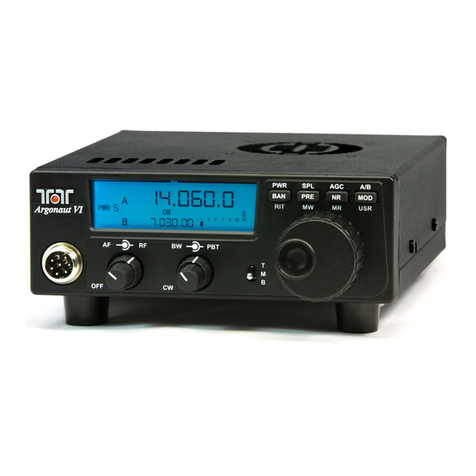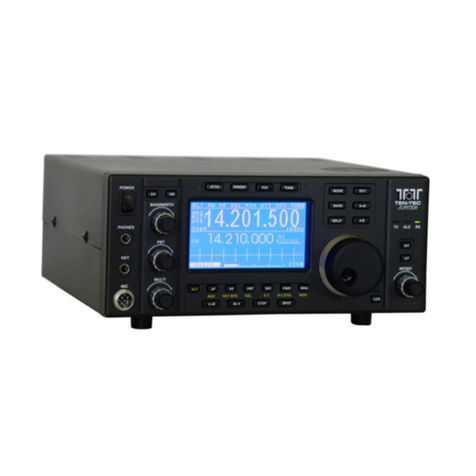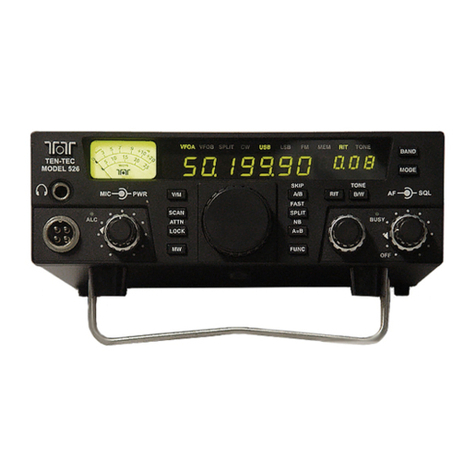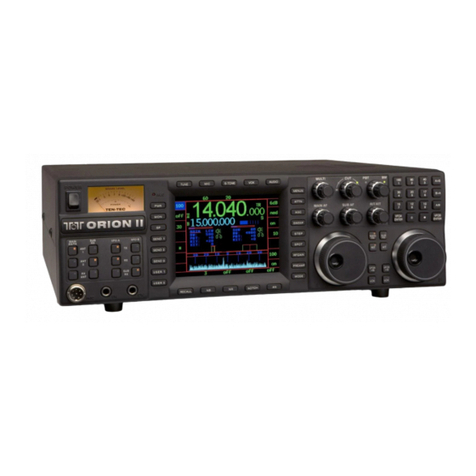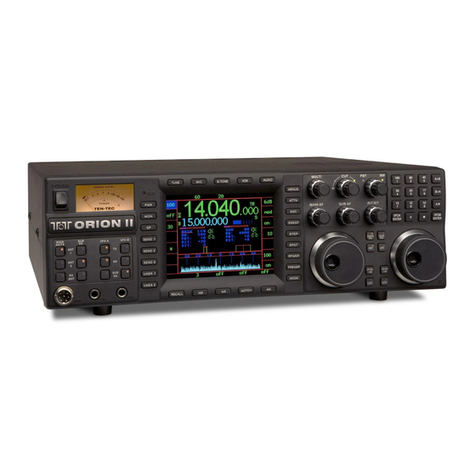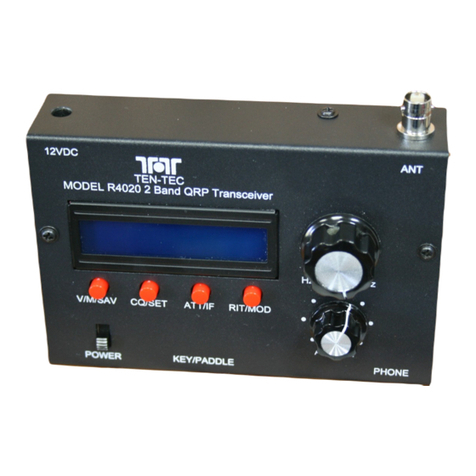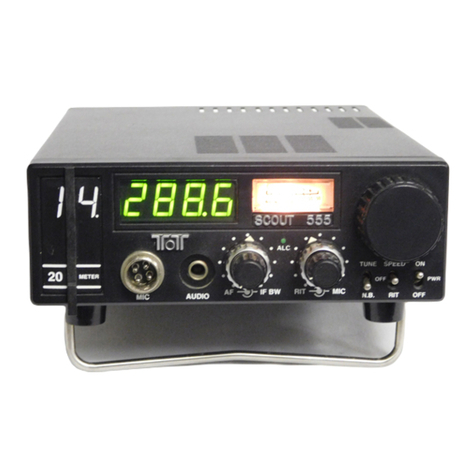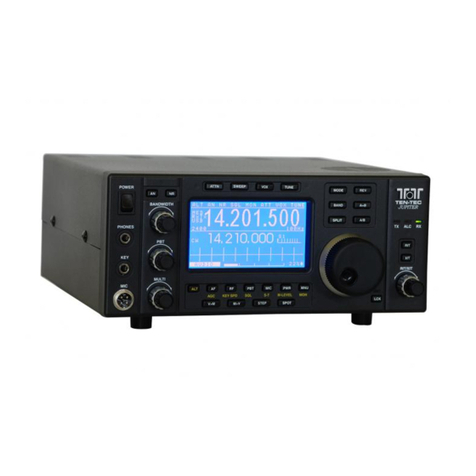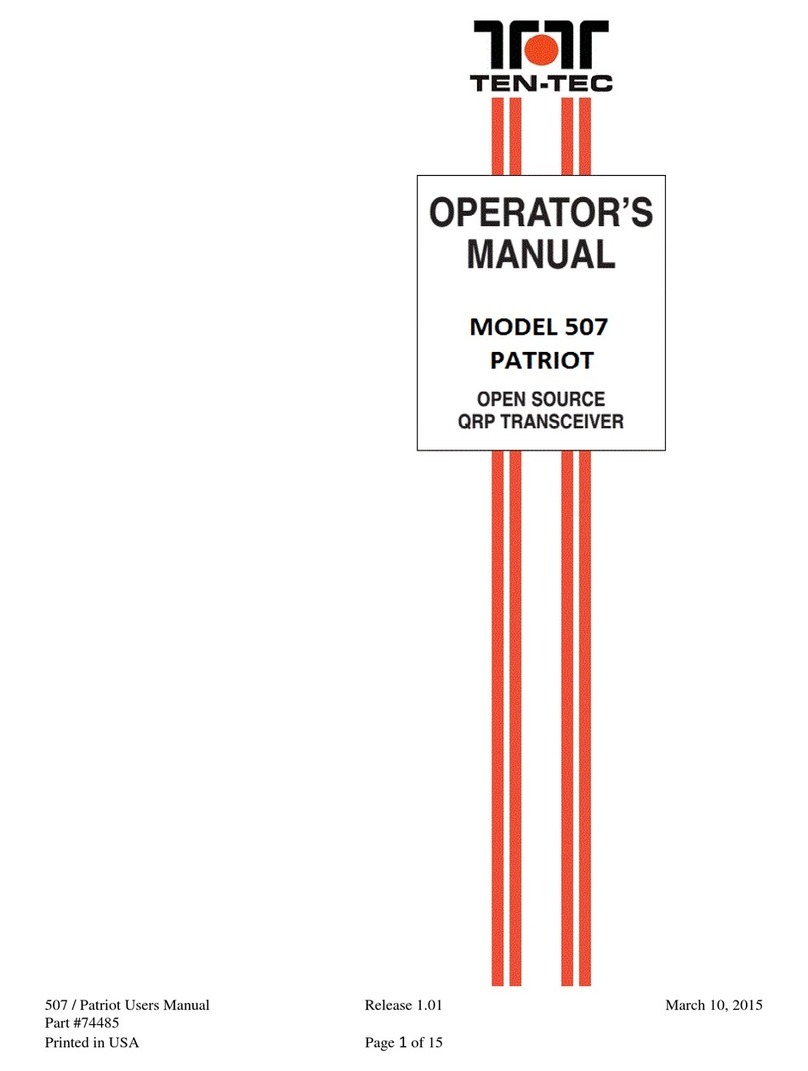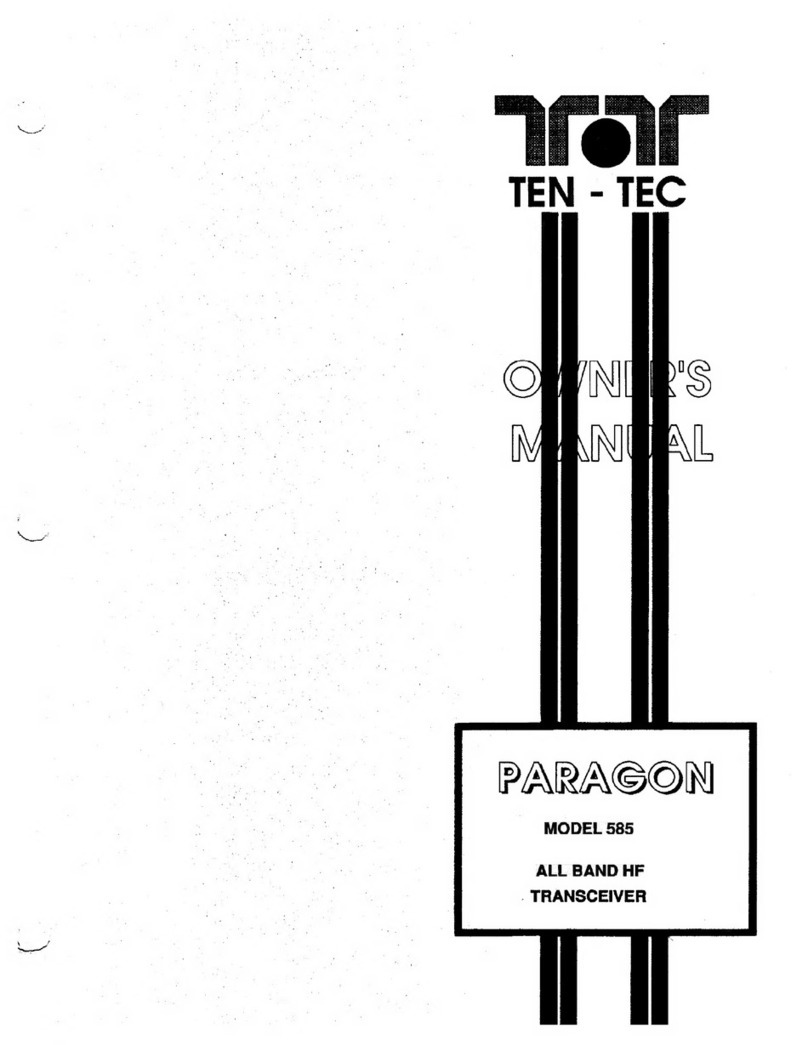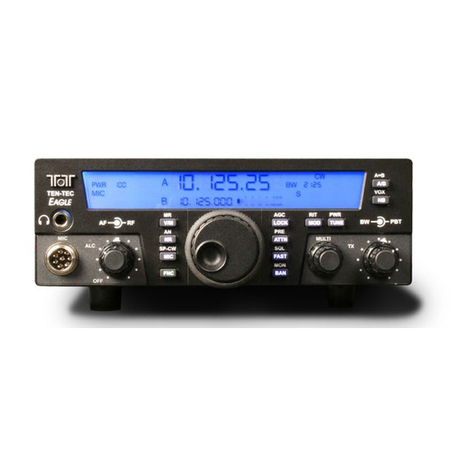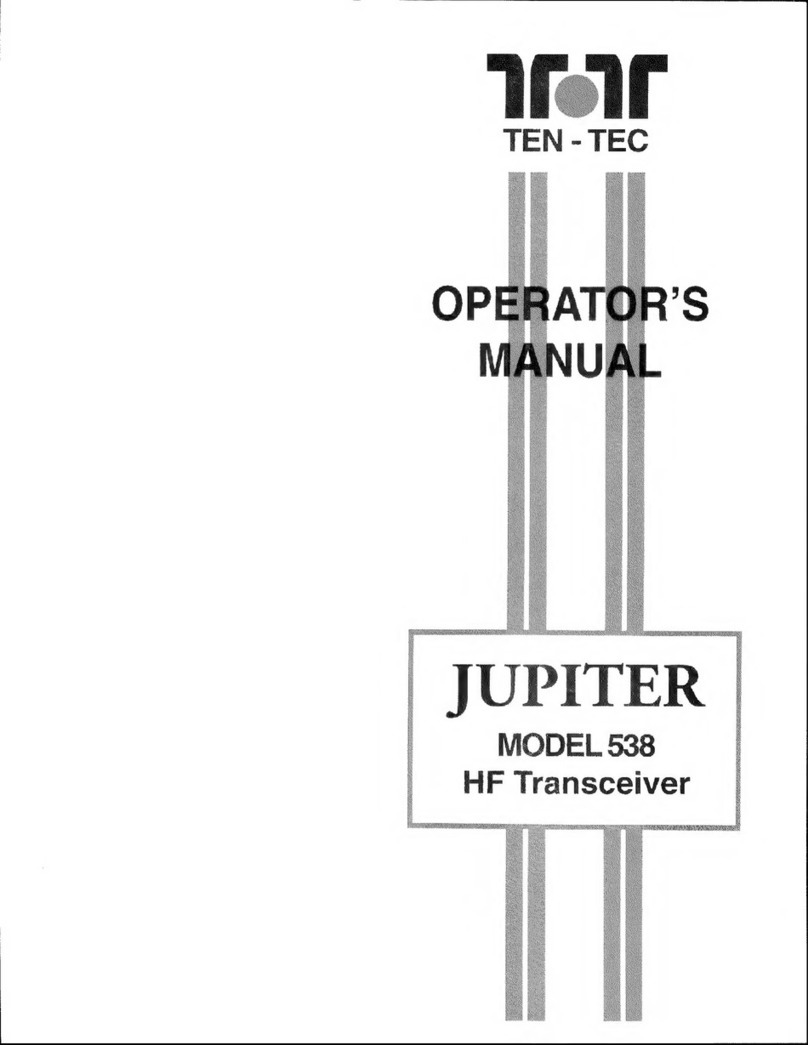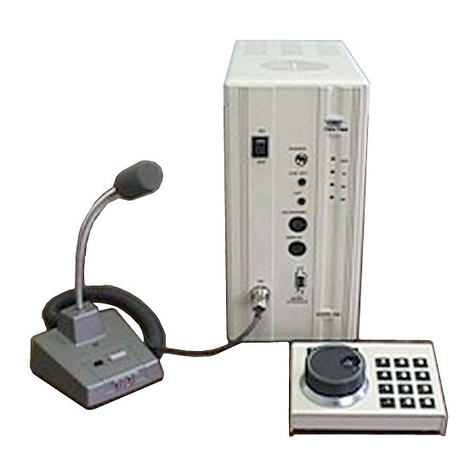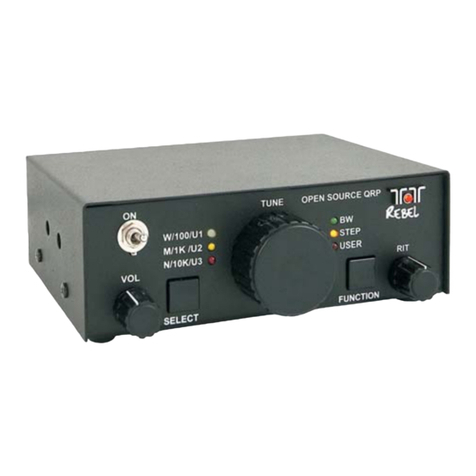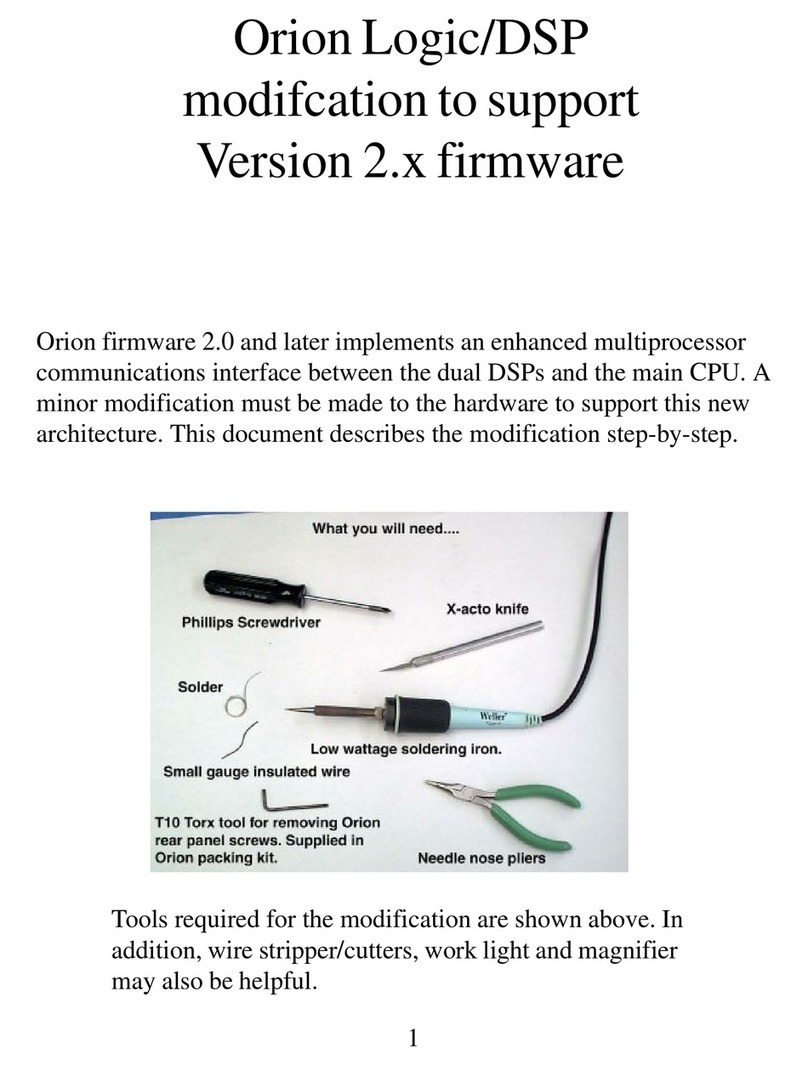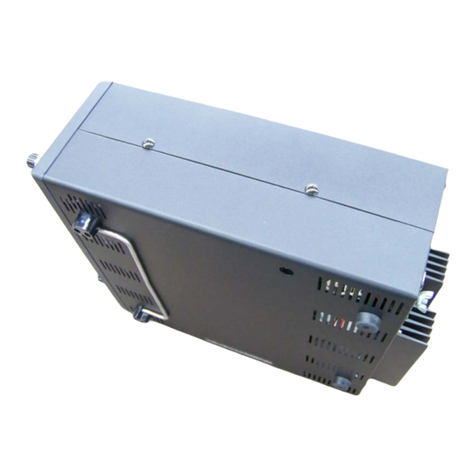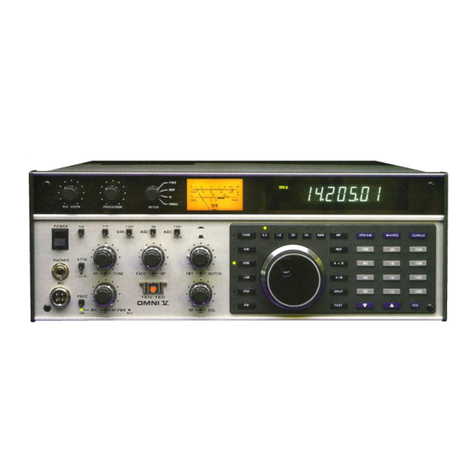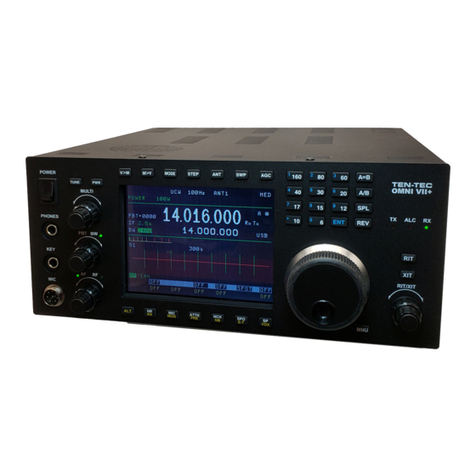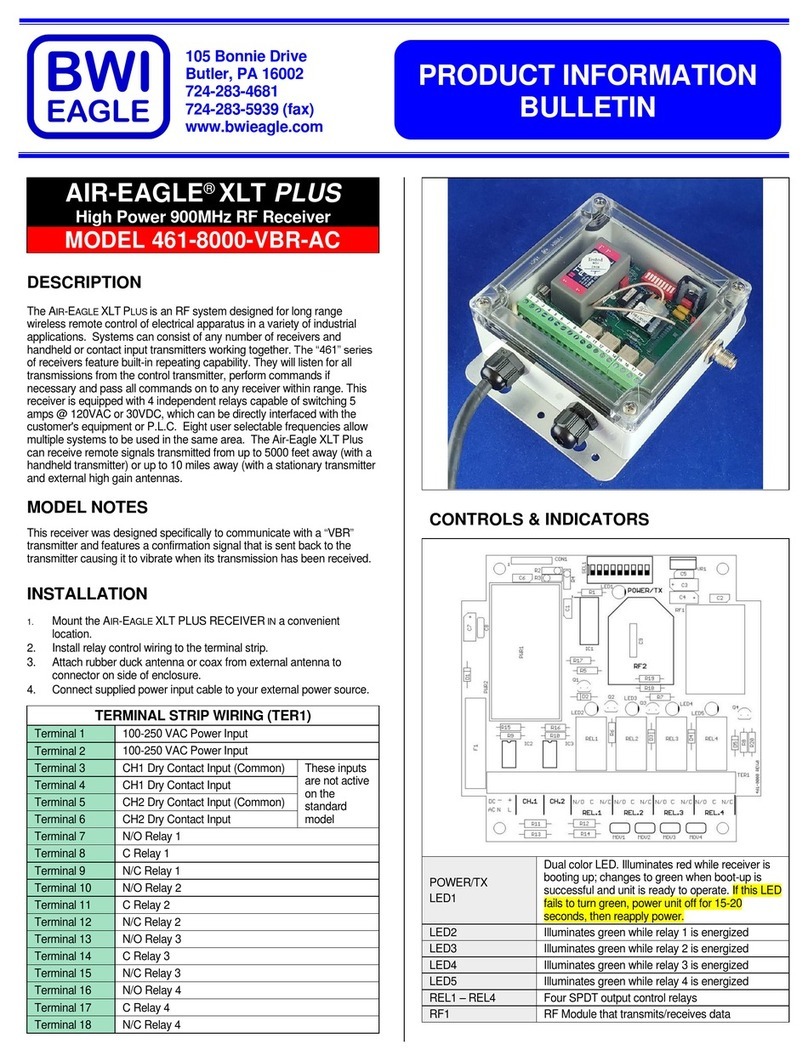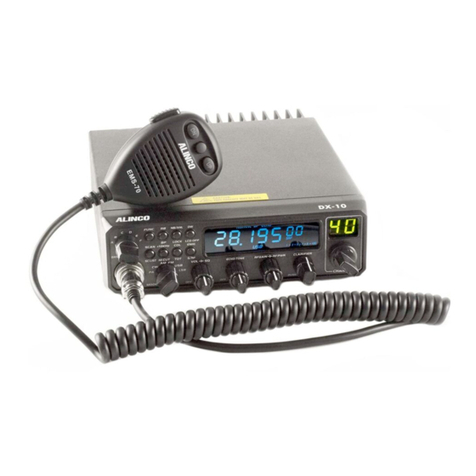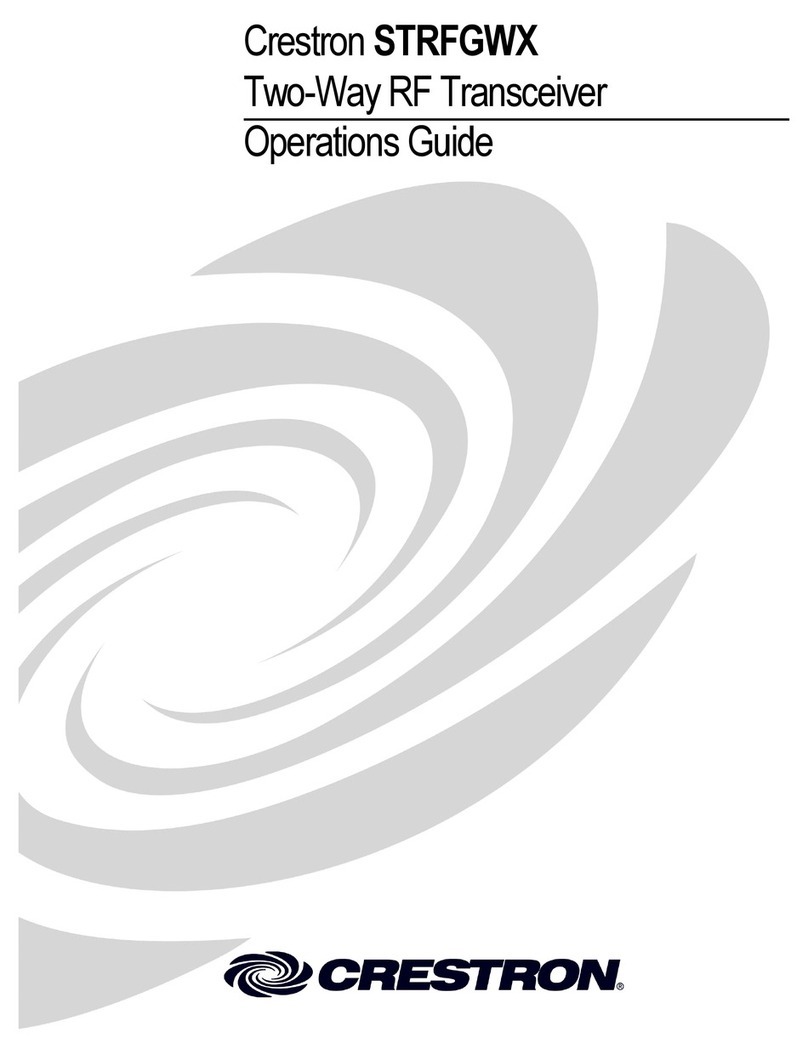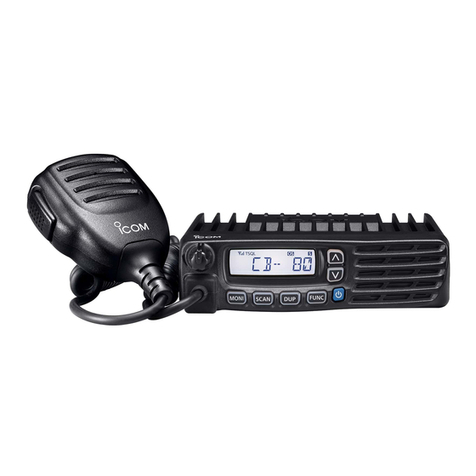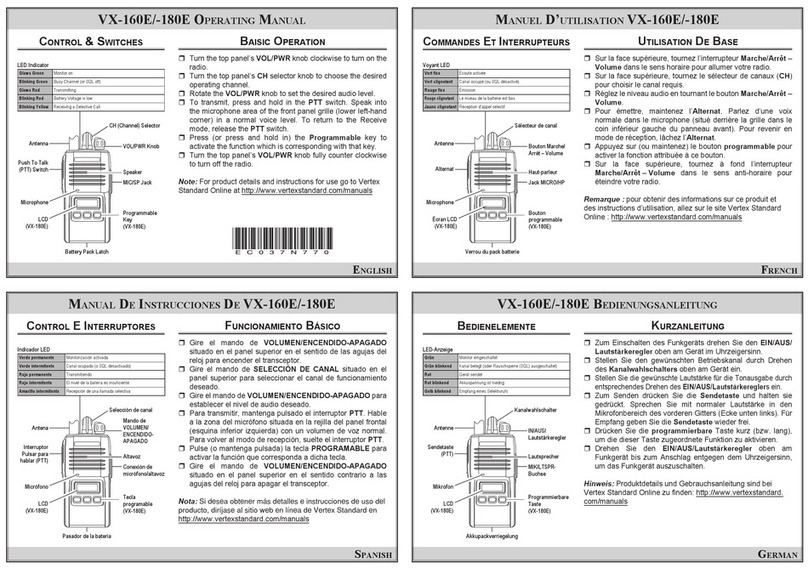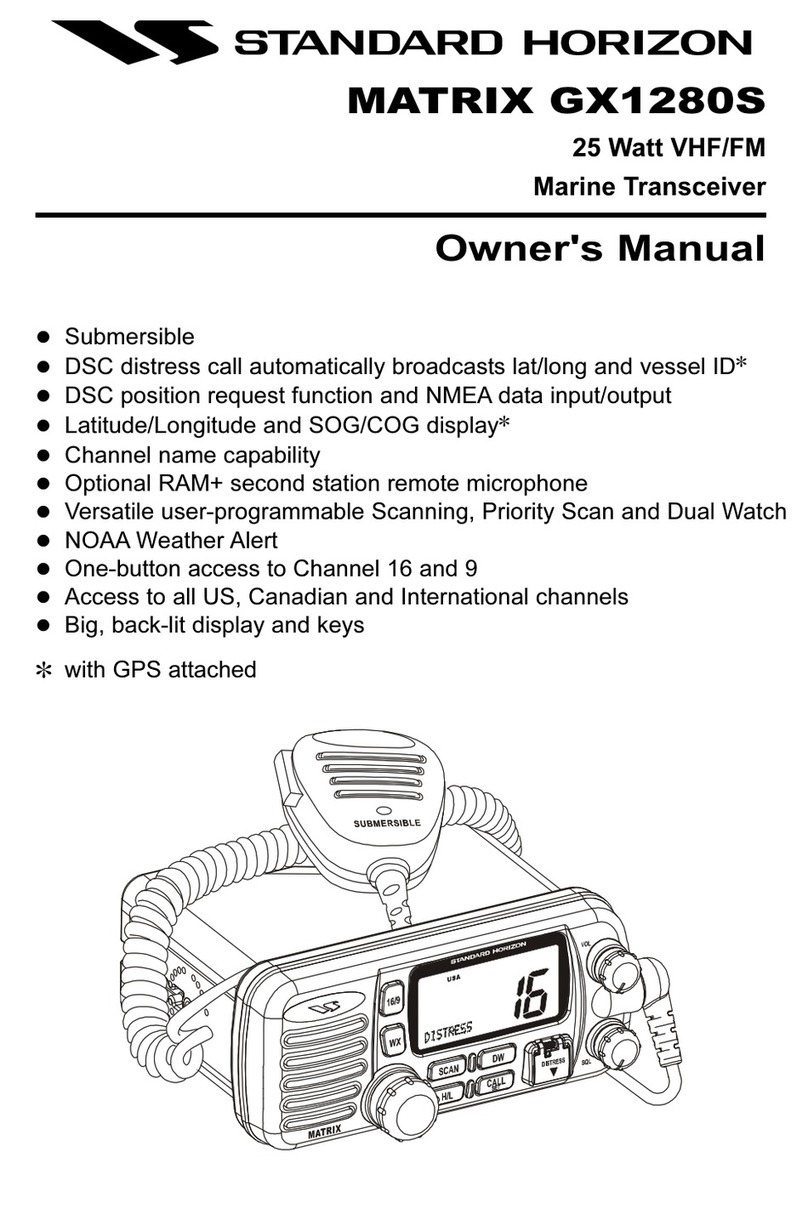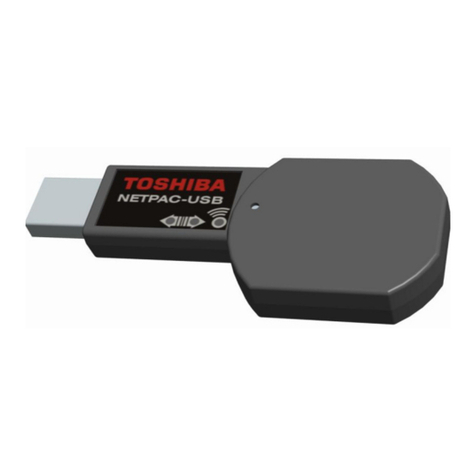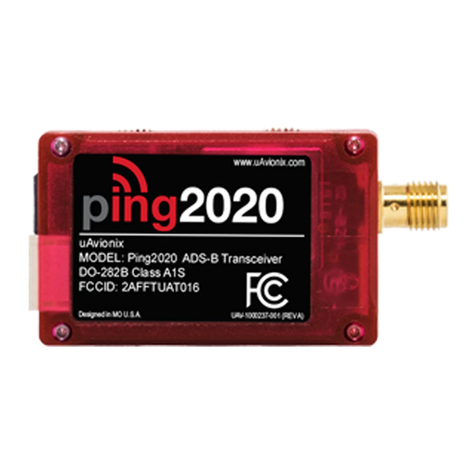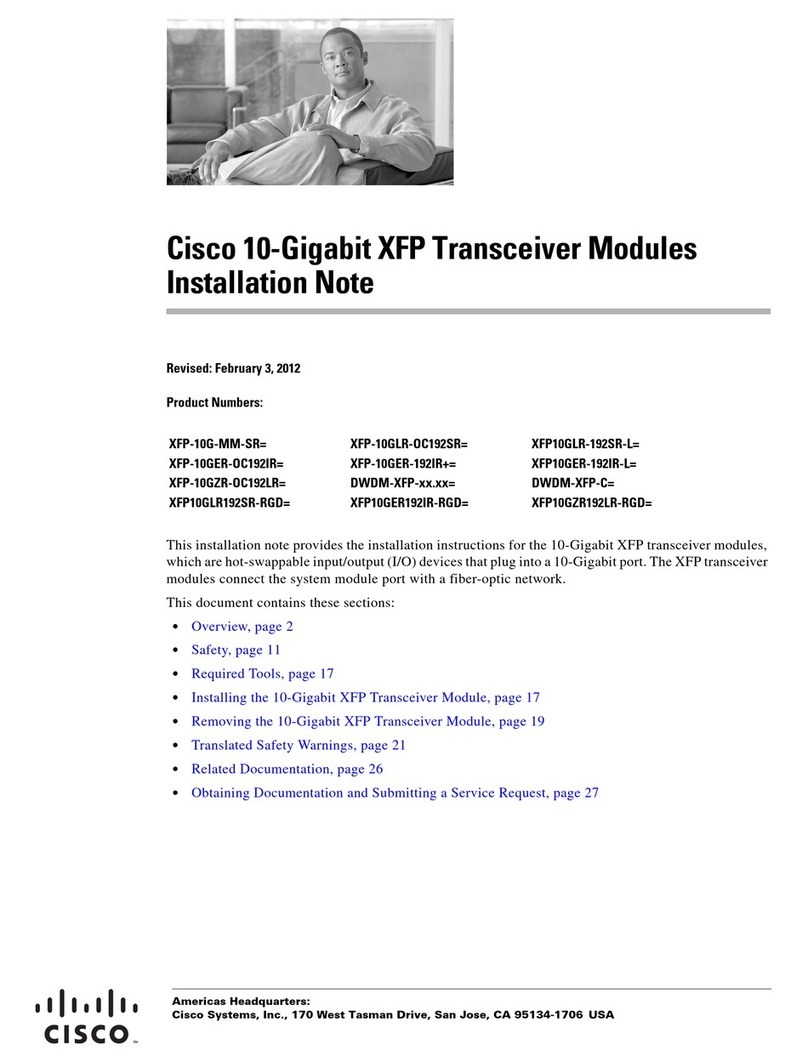
599 / Eagle Users manual Release 1.009 CE –April 15, 2015
Part #74447
Printed in USA 5
1.6. Philosophy of design
With the Model 599 Eagle, Ten-Tec has
created a transceiver combining simplified
controls and ease of operation with the
excellent performance of a low first IF 160-
through 6-meter ham-band architecture in a
compact, mobile-friendly structure. The
analog portion of the radio is double
conversion with IF frequencies of 9.0015
MHz and 22.5 kHz. A third conversion to
zero-frequency IF is accomplished in the DSP
processor.
General coverage receive is provided between
0.5 and 30 MHz.
Refer to the Block Diagram in the
“Specifications” section for the following
discussion. Receive signals are routed
through the optional antenna tuner and
transmit lowpass filter to a switchable 10dB
attenuator at the input of the BPF/Preselector
board. This board also contains the bandpass
filter selected for the band in use and a
switchable 12dB receive preamplifier. On the
TX/RX board, output from the preamplifier is
mixed with the first Local Oscillator to
9.0015 MHz and routed optionally through
the noise blanker to one of three roofing
filters. After selectivity roofing, IF
amplification is provided by a variable gain
amplifier which also develops the high-level
AGC. Finally, the 9.0015 IF signal is mixed
with the second LO to develop a 22.5 kHz
low IF for the Signal Processing Unit (SPU).
Based on a 36.096 MHz temperature-stable
reference, the Synthesizer board generates
first and second LOs via fractional-N
synthesis and fixed frequency division. The
SPU samples the low IF at 96K samples per
second and applies the resulting data to a
digital signal processor. Numerical
algorithms running in the digital processor
accomplish additional selectivity filtering,
low-level AGC, and demodulation. The
resulting audio appears at the speaker and line
outputs.
The PIC processor in the CPU module
executes firmware stored in EEPROM to
perform housekeeping functions such as
synthesizer programming/tuning, signal
switching, and front panel display and control
input. Based on the control inputs from the
front panel (or remotely via the USB
interface), the CPU writes display
information, tunes the LOs, adjusts
selectivity, and chooses both receiver
detection and transmit emission modes.
Transmit operation is basically the reverse of
receive. Audio or CW signals are generated at
zero-frequency (baseband) in the DSP,
frequency-shifted to the 22.5 kHz low IF, and
output to mixers on the TX/RX board for
conversion to the operating frequency. The
signal then travels in the reverse direction
through the selected Bandpass Filter to the
low-level drivers and Power Amplifier, then
finally through the Lowpass Filter and
optional antenna tuner to the antenna. If the
tuner is installed, forward and reverse power
measurements from the SWR bridge are used
by the CPU to select the correct inductance
and capacitance in an L-network to provide a
50 Ohm load to the transmitter output




















